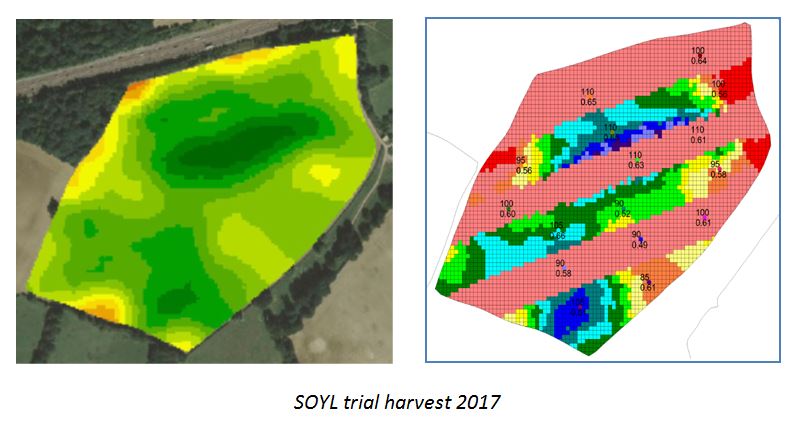Variable crops will require a considered PGR approach this season
Yet again a season has seemingly come at us with a fresh set of challenges. Personally, I don't think I've ever seen a 'normal' year and averages cover a lot of variability.
However, we do have a challenge with this season's oilseed rape (OSR) crops and working out what to do.
Autumn and winter have been both unseasonably dry and unseasonably warm. This has led to incredibly variable OSR establishment. Unfortunately, these conditions are perfect for cabbage stem flea beetle (CSFB) to take advantage of a struggling crop of OSR which is desperately trying to capture moisture while every extra bit of growth is being nibbled. Due to the warm weather we've had a very long egg-laying period with plenty of larvae being picked up in OSR crops in some areas. This creates two challenges: firstly, we have a very variable crop (depending on soil type and moisture availability) and secondly, flea beetle larvae infestations are also relatively variable.
Plant Growth Regulators (PGRs) will help us manage this and their use in OSR has been growing in popularity from the days of chlormequat, through the growth regulating effect of the triazoles tebuconazole and metconazole, to the specific PGRs for OSR which are now available such as Caryx and Circle.The second factor is to take into account the variety being grown. Of course, there are other factors too such as the exposure to the elements, the fertility of the site and planned nitrogen use so it is important to consider these too.
GAI can easily be measured and has been linked by extensive work from ADAS to show yield responses based on GAI and corresponding PGR use (metconazole in this study).
As shown in the graph above, there is a yield response to any crop over 0.8 GAI by influencing canopy structure when applied at the green bud stage. Any crop over GAI 2 will be very responsive, with reductions in lodging as well as canopy structure improvement. Our colleagues at SOYL precision can easily measure this via satellite for many growers already, as well as then produce a variable rate PGR application map. Other methods of assessing GAI are available such as using reference photos as shown in the Nutrient Management Guide (RB209) or a canopy assessment smartphone app. Once you have the GAI data you can then use PGRs variably. Where crops are thick, a suitable strong dose can be applied, while areas of the field that have a smaller crop canopy can receive a more suitable rate.
Satellite imagery is an excellent tool to assess canopy variation in a field and a sprayer plan can easily be made to match these images. Most sprayer controllers can take a variable GPS rate feed and will be able to vary the rates of application in line with the nozzle ranges.
Trials
Variable rate PGR trials have been undertaken on fields that showed canopy variation. Alternative uniform rate and variable rate strips were analysed to assess the effect of this approach on yield.
Average yield results from trial:
- Flat rate PGR: 3.49 t/ha
- Variable rate PGR: 3.65 t/ha
- Yield Increase: 4.39 % over flat rate application.
Variety management
The second factor to consider is variety choice. The AHDB recommended list provides a score for all OSR varieties with three categories:
- I.'resistance to lodging' (in which all varieties are classed as 8)
- II.'stem stiffness' (with one variety classed as 7, most 8 and a couple of 9s)
- III.'plant height' (arguably the most important).
As resistance to lodging is 8 across all varieties this category provides no use in determining PGR requirements. Stem stiffness is a useful aid, with weaker stemmed varieties being more likely to lean in high GAI situations. Plant height gives us a very useful guide as typically the very tall varieties tend to be the ones which fall over, especially when this is coupled with a high GAI score. For example, DK Exsteel is on the list at 167cm and will be far more likely to lean in a thick crop than Ballad at 150cm. This should be taken into account when thinking about PGR use.
All in all, this growing season does present some challenges but there are some indicators and tools that we can look to in order to assess and manage our crops.
Robert Nightingale
Crop Production Specialist
As a subscriber, you’ll receive email alerts each time a new blog is published so you can always stay updated with the latest advice and insights from our experts





Comments